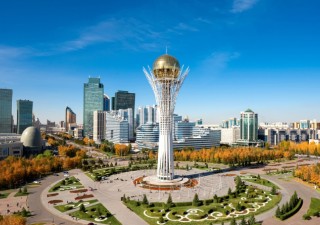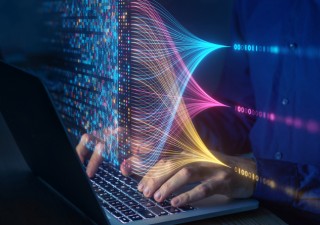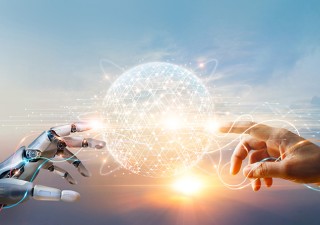AI in Malaysia: Can AI-generated works be copyrighted?
31 March 2025

The rise of AI-generated work casts a spotlight on the gaps in the current Malaysian legislative framework, which can only be bridged through legislative amendments or case law authorities. Kherk Ying Chew and Shueh Jing Koh explain.
Generative artificial intelligence (AI) has revolutionized the content creation industry, especially with the rise of advance models capable of producing art, music and literary works with minimal or no human input. This not only pushes the boundaries of creative expression but also existing intellectual property frameworks as Malaysian laws struggle to answer new and complex questions such as – can AI-generated work be copyrighted? If so, how and who gains the right?
Can AI-generated work be copyrighted?
Copyright is an exclusive right granted to the creator of an original work, giving them control over its distribution and usage. In Malaysia, this is governed by the Copyright Act 1987, and it sets several hurdles a potential work must clear before it can qualify for copyright protection:
-
Is the work original in character?
-
Who is the author?
Is the work original?
What constitutes an ‘original’ work? Before a work can qualify for copyright protection, it must first be a work which is eligible for copyright under Section 7 of the act. Section 7(3) of the act requires “sufficient effort” to have been expended “to make the work original in character”. According to the case of YKL Engineering v. Sungei Kahang Palm Oil [2022], “sufficient effort” refers to the expense of “time, labour, and skills” to render a work original. The reference to “sufficient effort” and “time, labour, and skills” expended is directed to effort made by a human author in the creation of the work.
Let’s next examine the position of other countries regarding original works. The U.S. Copyright Office adopts a strict approach as exemplified in the Zarya of the Dawn case, explicitly excluding any work without human authorship from copyright protection – even where the user had provided “hundreds or thousands of descriptive prompts” in order to achieve the desired output. In another U.S. case, Thaler v. Perlmutter (2023), the District Court also declared that “[h]uman authorship is the bedrock requirement of copyright”. The U.S. sets a clear delineation for copyright eligibility, that prompting does not equal human authorship.
In addition to judicial development, the Copyright and Artificial Intelligence report issued by the U.S. Copyright Office has also contributed valuable perspectives on the intersection of AI and copyright. The U.S. Copyright Office takes the view that prompts, even highly-detailed prompts, are insufficient if the prompts do not control how the directions are executed; ultimately, there is a fine line between using AI as an assistive tool and using AI as a stand-in for human creativity.
China’s initial stance on AI copyright protection was remarkably similar to the position adopted by the U.S. courts. In the case of Feilin v. Baidu, the Beijing Internet Court ruled that content not created by “natural persons”, such as AI-generated output, could not be recognized as copyrighted works – even if it meets the “originality” requirement to be recognized as written works. Interestingly, a few months later a second decision was handed down that directly conflicted with the findings of Feilin. In the case of Shenzhen Tencent v. Yingxun, AI-created works were held to be eligible for copyright protection. The Chinese court declared Tencent to be the copyright holder by virtue of the fact that the substantial inputs by Tencent’s team during the creation process constitutes an “intellectual activity” – the relevant test in Chinese Copyright Law. This dichotomy was an early sign of the Chinese court’s evolving views on AI-generated output and copyright, suggesting an increased willingness to tolerate lesser degrees of human intervention in copyrighted works.
The Chinese stance further shifted in favour of copyright protection for AI-generated work in Li v. Liu (2023). On the facts, using an AI model to generate content was akin to “man using tools to create”, and the resulting content “should be recognized as works and protected by the Copyright Law”. This thus conversely illustrates that a sufficient degree of human intervention – in this case, sufficient “choice, selection, arrangement and design” – can make the work original, and thus eligible for copyright protection. Chinese courts appear to now accept minimal input – such as word prompts from a single user in Li – as sufficient, where previously in Shenzhen Tencent, nothing less than the coordinated efforts of an entire creative team was necessary to meet the legal test.
Closer to home, while there has yet to be a Singapore report case which touches upon the copyrightability of AI-generated work, it is anticipated that Singapore’s stance may be similar to that of the U.S. courts. In Asia Pacific Publishing v. Pioneers & Leaders [2011], the Singapore Court of Appeal held that there can be no “original work” eligible for copyright protection without a human author. Further, a standard of sufficient “creativity” and “intellectual effort” must be met before the work can be considered original in Singapore, thus requiring a degree of human involvement.
As will quickly become a common theme in this topic, the eligibility of AI-generated work for copyright protection stands to be tested in Malaysia courts. Unlike the U.S., Malaysia has no precedent in excluding AI-generated work entirely from copyright protection. As such, there is room yet for Malaysian courts to consider the Chinese approach in treating AI as assistive tools, particularly if AI was only used to augment the final creation rather than to generate content from scratch with simple and bare prompts.
Who is the author?
So, who is the author? Under Section 3 of the act, the author is broadly defined as simply the creator of the work, or the person “by whom the work was made”, and as the entity upon which copyright is initially vested pursuant to Section 26(1). While there are no cases in Malaysia demonstrating the courts’ approach in discerning the author of a computer-generated work, this question has been explored in other jurisdictions.
In some early cases involving computer-generated works such as Express Newspaper v. Liverpool [1985], UK courts have shown a readiness to find a human author in the context of works generated by computers, typically the programmer. However, that was back when simple rules-based systems were used, where the programmer exercised a high degree of control over the output. In contrast, modern generative AI is unpredictable in that they may generate varying output, even when given identical prompts.
If the issue of copyrightability of AI-generated work is tested in Malaysian courts, it is likely that a traditional human-centric approach may be followed. Existing provisions generally assume a human creator – such as under Section 17(1) of the Act, which premises the duration of copyright on the author’s life and death, or Section 25, concerning an author’s “moral rights”. Further, even where non-human authors are concerned, there are no examples of courts recognizing anything other than corporate entities as “qualified persons”. In fact, unlike the UK Copyright, Designs and Patents Act 1988, which provides specifically for computer-generated work, Malaysia has no such provision – which may mean such works may not be eligible for protection in the first place.
Section 10(1) of the act stipulates that copyright shall subsist in every work eligible for copyright protection of which the author is a “qualified person”. A “qualified person” can either be an individual, meaning a person who is a citizen or permanent resident of Malaysia, or a corporate entity, meaning a company established in Malaysia and constituted or vested with legal personality under Malaysian laws. The definition of “qualified person” as provided in the act makes it unequivocal that a “qualified person” can only be either a human or a body corporate – it does not, at this juncture at least, extend to include any other non-human persons.
Is a “qualified person” mandatory? An interesting scenario arises when considering Section 10(2) and (3) of the act, which also allows copyright to subsist so long as the work was first published, incorporated or made in Malaysia. If either of these points are successfully established, this would allow the work to qualify for copyright protection in Malaysia, provided the work itself is eligible for copyright protection.
It is pertinent to note that neither Section 7 nor Section 10(2) or (3) of the act calls specifically for a “qualified person” or a human author. One queries whether this may allow an argument that copyright could subsist in works of a non-human author such as an AI model. However, there is still the requirement to satisfy the threshold for “time, labour, and skills” as called for in YKL Engineering (supra) and works generated and/or created by a non-human author may not be eligible for copyright protection. As it stands, the proverbial jury is still out in this regard.
Conclusion
The rise of AI-generated work casts a spotlight on the gaps in the current Malaysian legislative framework, which can only be bridged through legislative amendments or case law authorities. As AI technologies continue to evolve and become more entwined in creative processes, the absence of clear legal provisions leaves creators using generative AI technology in a state of uncertainty.



-preview.jpg)





